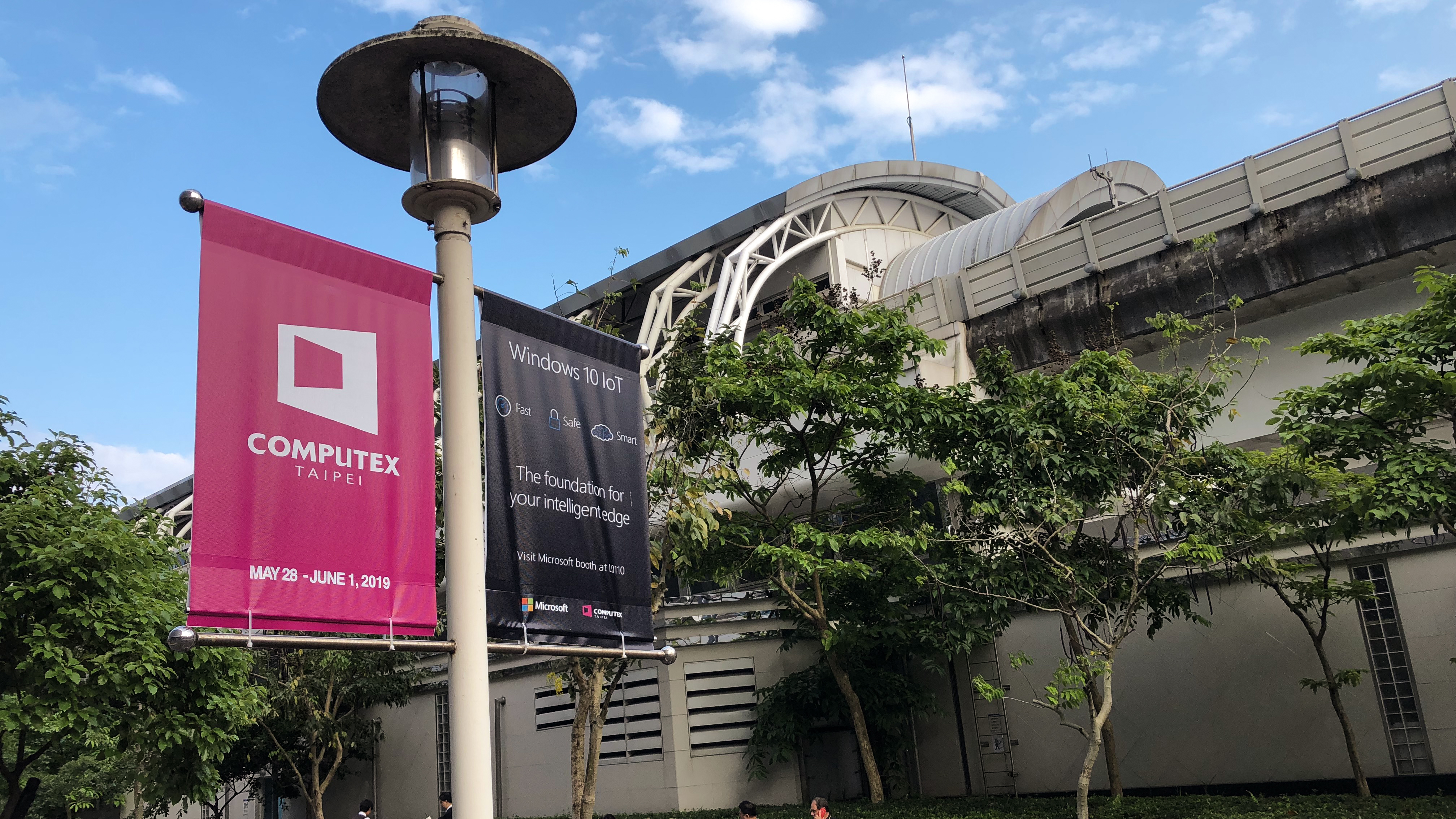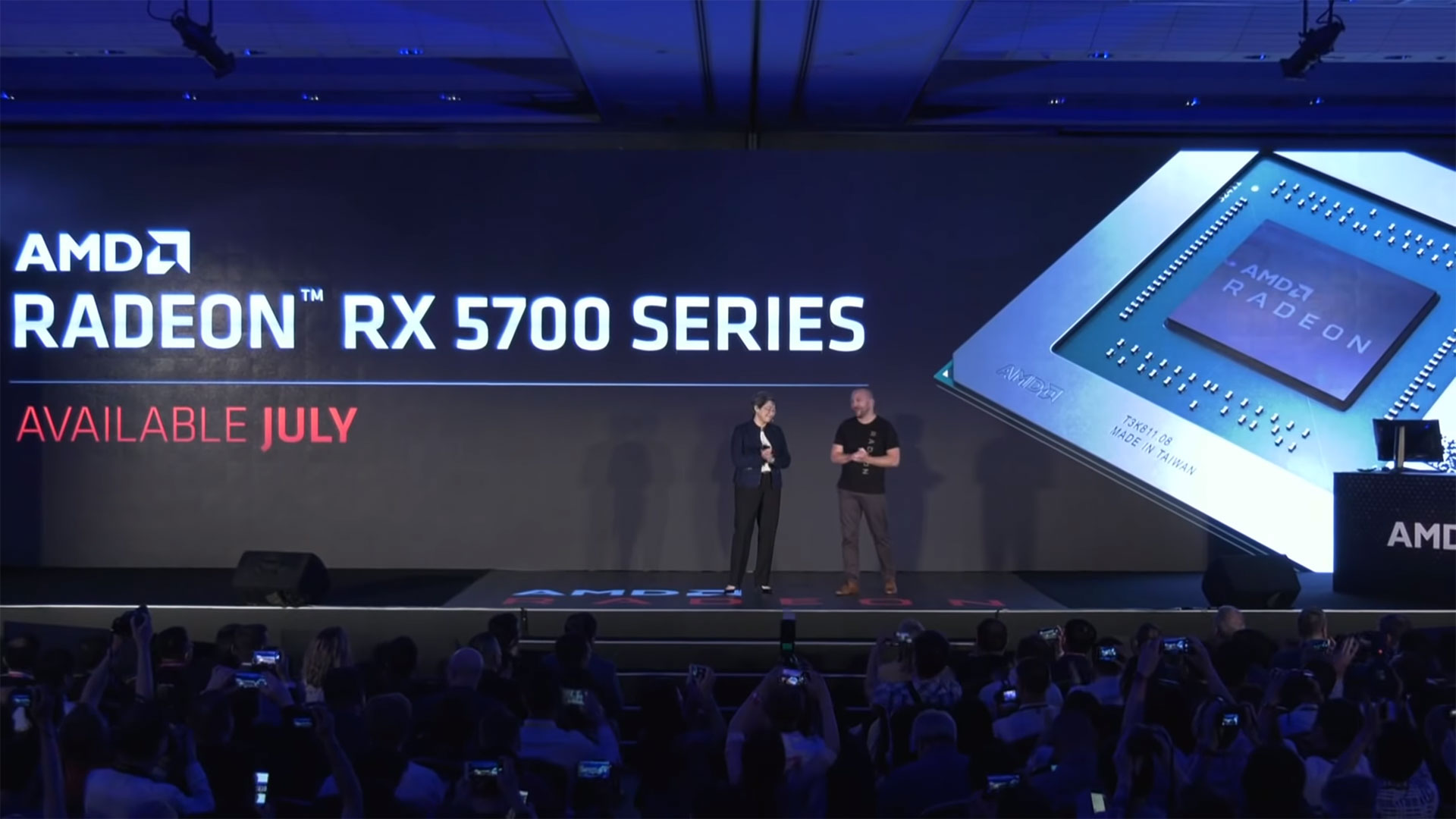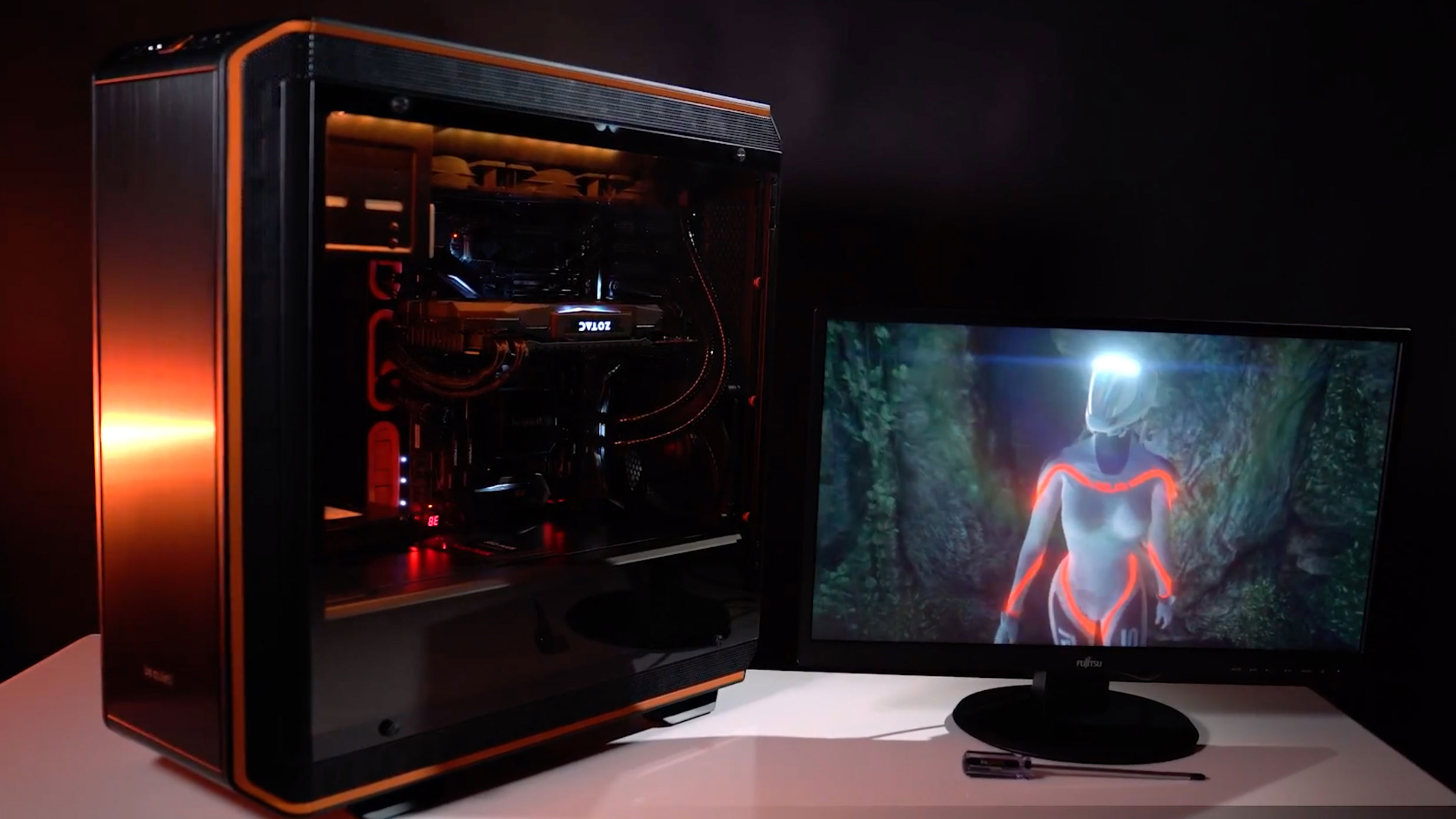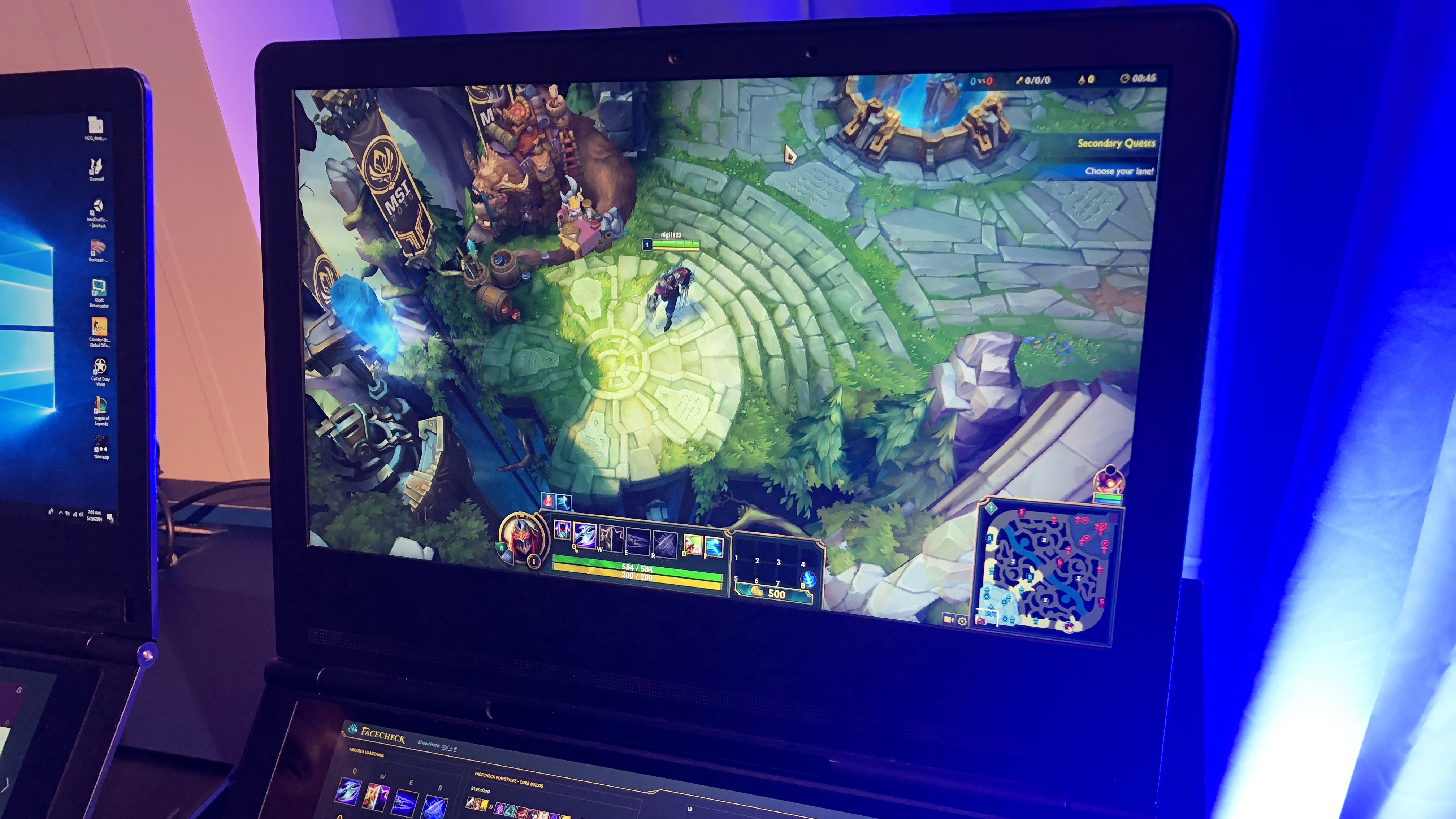
Computex 2019 is here. Taking place this week, from May 28 through June 1, the international computing trade show has no doubt been full of gaming announcements — pertaining to hardware and software alike — some of which have never shown their faces to the public. Assuming you weren't paying attention already, this is the year to start. No matter what the haters say, gaming isn't going anywhere. Thus, it's only a matter of time before we see mainstream interest turn to systems and services.
To many companies, Computex acts as a catalyst to seduce that emerging market. AMD, for example, hosted a keynote one day prior to the expo's official commencement. It is there than we finally saw its much-anticipated 7nm Ryzen 3000 processors and Radeon 5000 GPUs. The latter, the company claims, are 10 percent faster than the existing GeForce RTX 2070 graphics card from Nvidia. Along with that reveal came a massive overflow of X570 motherboards, that is the latest chipset designed for 3rd Gen Ryzen and the PCIe 4.0.
Still, as always, the stars of the show are Asus and MSI. While Asus is largely focused on creators this year, MSI said it's coming out with a hardy notebook capable of maintaining a steady 5GHz overclock. Until then, as we continue to take in the sights of the illustrious metropolis that is Taipei, Taiwan, you can stay at home, reading our onsite coverage from the comfort of your own home. As we probe the floors of the exhibition hall for the latest and weirdest gaming tech, stay tuned to this page (as well as our Facebook and Twitter for the latest updates on Computex 2019).

Jarred Walton: Components
Computex has been big for AMD. While Intel will be launching new 9th and 10th gen CPUs this year, the 10th gen CPUs will only be for laptops. Desktops will have to get by with a collection of new 9th gen Coffee Lake Refresh parts, and when 10th gen desktop parts arrive, we expect they'll initially be 14nm Comet Lake rather than 10nm.
AMD meanwhile has been making noise about its third generation Ryzen 3000 CPUs. Where Intel continues to struggle getting 10nm out the door, AMD will use TSMC's 7nm process technology for the Zen 2 architecture and Ryzen 3000 CPUs. That means smaller chips, and we expect to see up to 16-core/32-thread processors for AMD's mainstream AM4 platform.
AMD announced five third gen Ryzen 3000 parts at Computex: the Ryzen 9 3900X, Ryzen 7 3800X, Ryzen 7 3700X, Ryzen 5 3600X, and Ryzen 5 3600. Those currently range from 12-core/24-thread for the 3900X down to 6-core/12-thread on the Ryzen 5 parts. Zen 2 architectural upgrades include larger caches, double the floating point performance, and an overall 15 percent improvement in IPC. The result is that AMD is now touting performance that can actually match Intel in singlethreaded tests, and pull well ahead in multithreaded tasks, all while using less power.
AMD X570 motherboards for the third gen Ryzen CPUs are also out in force, with AMD touting 56 different models from its partners. The biggest feature on X570 is support for PCIe 4.0, which will double the bandwidth between the CPU and chipset as well as the CPU and GPU. Previous generation AMD X370 and X470 motherboards, as well as B350/B450, will also support Ryzen 3000 with a BIOS update.
Keep up to date with the most important stories and the best deals, as picked by the PC Gamer team.

AMD also revealed details and launch plans and branding for its Navi graphics architecture and new AMD Radeon RX 5000 GPUs. The RX 3000 rumors all proved false, and instead AMD will be going with RX 5000, with the 50 being in part for AMD's 50th anniversary as a company. The Navi architecture improves the base performance by about 25 percent per CU according to AMD, and performance per watt will be 50 percent better.
To put that in perspective, AMD's RX 5700 looks set to go head-to-head with the RTX 2070, likely matching it on performance and power (but without the ray tracing and DLSS features). What's more, the RX 5000 chips should deliver that performance in a smaller chip for a lower price.
AMD hasn't revealed the full line of RX 5000 GPUs yet, but we do know they're coming July 7. Hopefully the RX 5700 will land at around $300-$350, but we'll find out more at E3.
Joanna Nelius: Desktop PCs and cases
There’s still a lot of activity around desktops, with Nvidia’s RTX and GTX 16-series graphics cards now a staple of new prebuilts. But with the AMD Ryzen 3000 series due to release soon, as well as its Radeon RX 5000-series, it’s expected that prebuilt manufacturers will add those processors and graphics cards to their list of build specifications.
We assume those companies are already testing prebuilts with the new Ryzen processor and graphics card; AMD announced that both its Ryzen 3000-series and Radeon RX 5000-series will be available starting July 7, so prebuilt desktop PCs which one or both those components should be right around the corner.

As far as PC cases go, there’s been a slow-growing trend toward smaller form factors that still pack the same amount of power as a high-end PC in a standard-sized case. Companies like Cooler Master recently released some of the cases it showed off at CES 2019, like the customizable MasterBox Q500L, an mATX case that can support a standard ATX motherboard. Corsair has its One i160, which is a high-end system, as well as MSI’s Trident X, so maybe we'll see cases that focus on maximizing airflow and reducing noise as much as possible.
So far, the following companies have made announcements regarding new PC desktop cases:
MSI reveled five new cases, the MPG Harpe 300 and 300R, and the MPG Sekira 500 series, which comes in three different models: the Sekira 500G, 500X, and 500P.
NZXT is giving almost its entire H-series of cases a refresh, the the H210, H210i, H510, H510i, H710, and H710i.
Cooler Master announced several new cases, five to be exact: the Cosmos C700P Black Edition, Silencio S400, Silencio S600, MasterCase H100, and MasterCase SL600M Black Edition.
be quiet! introduced their first compact ATX case, which can fit a full ATX motherboard, radiators up to 360mm, high-end graphics cards, and a bunch of other goodies, just like a mid or full tower. The small form factor is definitely getting more popular.
Gabe Carey: Laptops
In an unusual turn of events, Intel stole the show this year when it comes to laptops. As Jarred mentioned, 10nm processors are here, just not in the way you expected them to be. This time, they're only coming to laptops, and there's a rumor circulating right now that this die shrink will be skipping desktops altogether. Instead, we'll see 10nm, 10th gen U- and Y-series chips make their way to laptops while 10nm desktop chips get shafted in favor of another 14nm batch. Then, presumably sometime next year, we'll start to see Intel 7nm chips trickle in.

More exciting, however, is that the Blue Team showed off a dual-screen proof of concept called Honeycomb Glacier. Targeting ardent multi-taskers, specifically streamers who often find themselves switching between playing games and interacting with fans, the the idea is to license out the design to OEMs like HP and Asus for use in their own laptops. Although we'll never seen an actual Intel laptop called Honeycomb Glacier in the flesh, chances are we'll see an whole new breed of gaming laptop, bolstered by a pair of sturdy hinges that are as easy to adjust as the lid on a "normal" clamshell notebook.
Of course, no Computex is complete without MSI. In addition to revamping its GE65 Raider with a thin and light, notably non Max-Q design — along with (up to) a 9th gen Intel Core i9 processor, GeForce RTX graphics and a 240Hz screen — the Taiwanese hardware maker shed light on a new musclebook that was four years in the making. Equipped with 11 heat pipes and two pairs of fans, it's bound to stay cool despite the fact that its desktop S-series Intel i9-9900K processor can be overclocked to a stable 5GHz. Or so MSI claims ... we'll see for sure when we get review units in the New York office hopefully before it releases in June.
Alan Bradley: Peripherals
PC peripherals and accessories traditionally make up a niche but important corner of the announcements that come out of Computex, and we expect this year to be no different. On the display side, monitor announcements from BenQ on panels targeting the eSports segment are likely, given their focus on that market subset, but I wouldn't be surprised to see monitor reveals from them more broadly aimed at gaming and productivity. HP has also been making waves in the gaming monitor space recently, so more information about their forthcoming panels is sure to be a major part of their show presence.
We also know some other major players in the peripheral space will be at the show, including Cooler Master, so expect something around keyboards, mice, or their PC cooling solutions. On the mechanical keyboard front, we've seen new switches introduced in Taipei before, so there's a definite possibility we'll get news on new configs from Cherry, Kailh or some of their new competitors.
Judging from the language in some manufacturer invites, we also expect to see a number of companies expanding into full scale mouse charging pads and compatible pointers, as well as pads that include Qi charging support both for mice and other devices. Headsets will likely continue to monopolize their share of the spotlight as well—we expect to see new cans from SteelSeries and Sennheiser specifically, as well as a larger focus on gaming headsets packing USB-C connectivity.

Thus far we've seen announcements from HyperX, who launched a gaming keyboard dubbed the Alloy Origins with a proprietary version of switches mimicking Cherry MX Reds (but with slightly shallower travel and actuation depths), and a wireless gaming mouse from Cooler Master. The mouse packs the Pixart PMW 3360 sensor and a massive 32,000 CPI ceiling as well as, as expected, Qi wireless charging support. SteelSeries is also making news at the show with the launch of a pair of gaming keyboards, the Apex Pro and Apex Pro TKL, which allow users to manually set the actuation point of their switches, whether they prefer a shallow actuation to rapidly spam keys or a deeper point to ensure accuracy. The Apex Pro also features a little built-in OLED display that can flash notifications from games and apps.
Bo Moore: Software
As a hardware-focused show, we typically don't see game announcements at Computex. As for other forms of software, we've seen a bit of movement in the form of new benchmarks tools. Namely, PCMark 10 Professional Edition has two new benchmarks: a battery life test that produces a broad look at battery performance on laptops, and a new application test that's based on Microsoft Office.
Other things to look out for are case mods and overclocking records, both of which have a strong showing at Computex every year. We've seen some awesome case mods in years past, and the show is also a time where professional and amateur extreme overclockers show off their skills and even compete. G.Skill holds an annual overclocking world cup for RAM overclocks, and pros like de8auer are usually in attendance to show off the latest in overclocking, delidding, and other bleeding-edge techniques.
The collective PC Gamer editorial team worked together to write this article. PC Gamer is the global authority on PC games—starting in 1993 with the magazine, and then in 2010 with this website you're currently reading. We have writers across the US, UK and Australia, who you can read about here.


